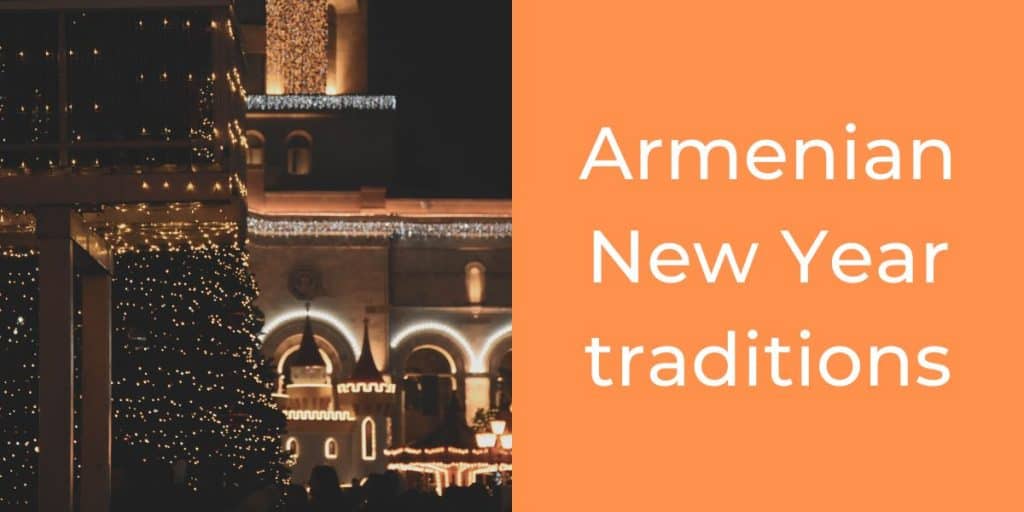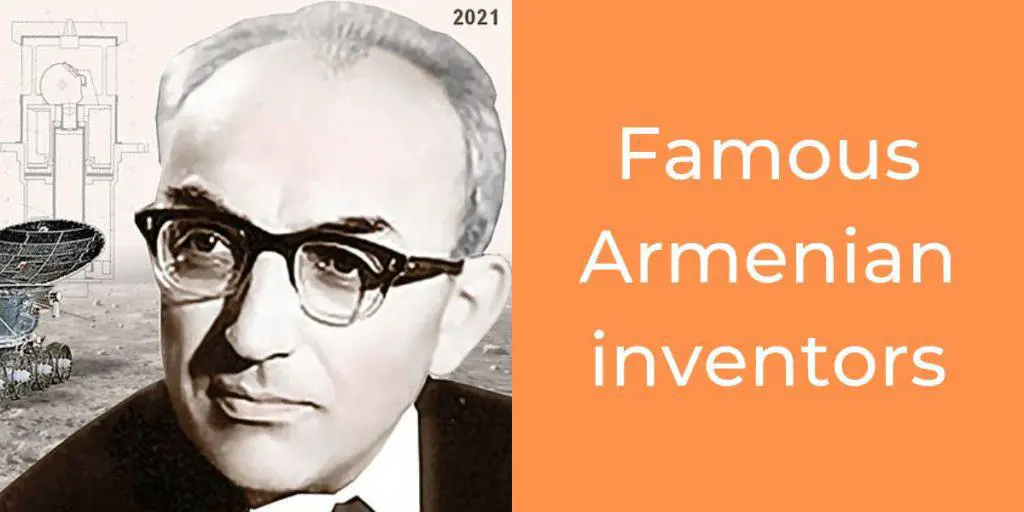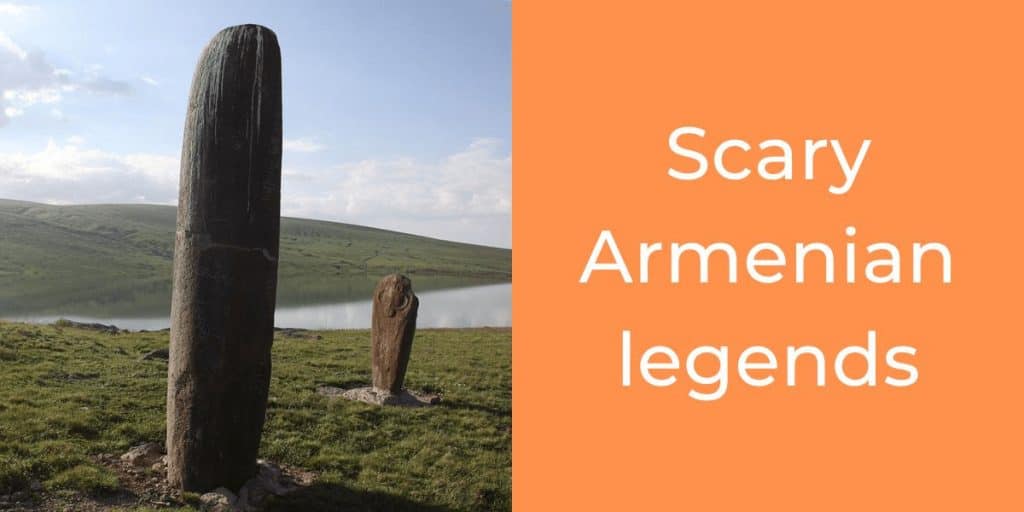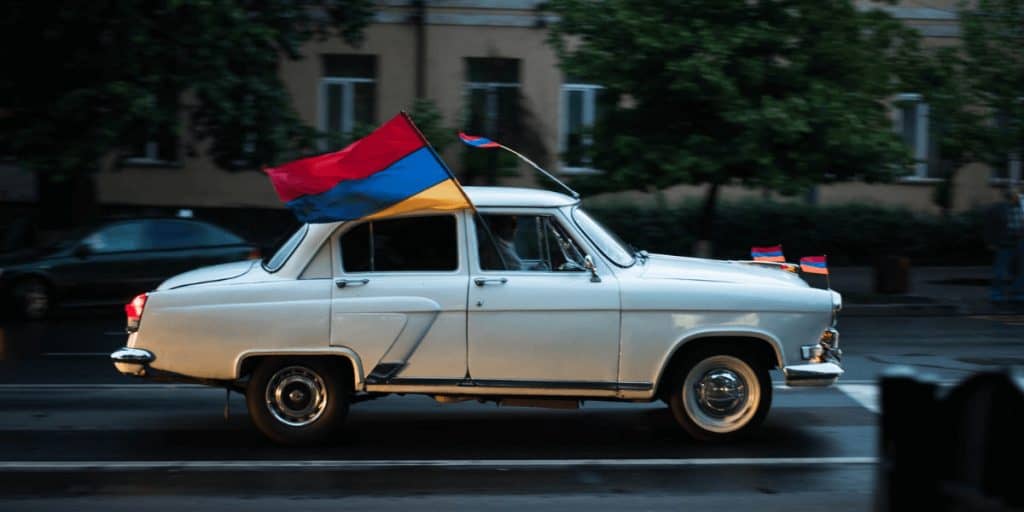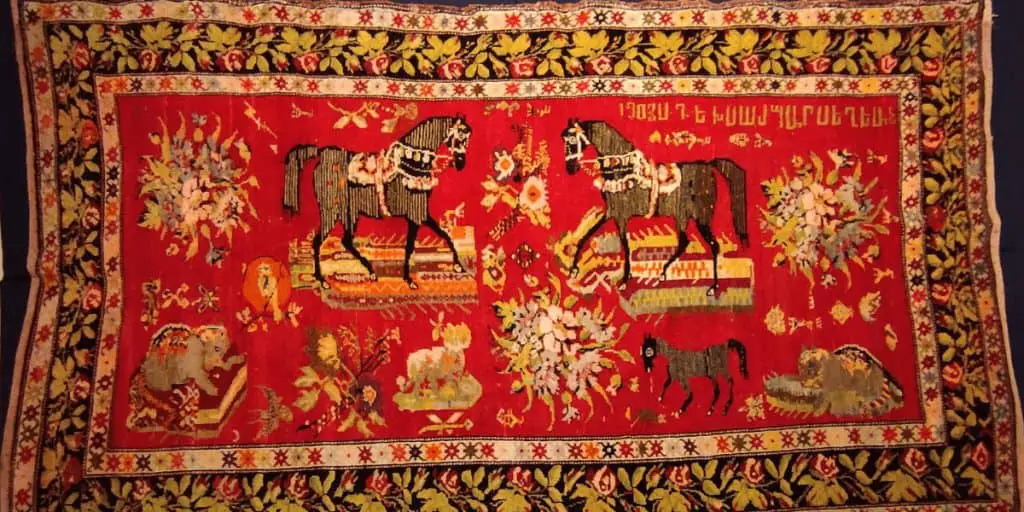As the winter spreads its wings upon the fascinating landscape of Armenian hills, a joyous celebration happens to mark a new beginning. Armenian New Year is a time when people gather together to say farewell to the old year and welcome the new year with new hopes and aspirations. This celebration is deeply rooted in history, culture, and a sense of community. But it hasn’t always been celebrated the way we do it today. Let us look at some Armenian New Year traditions and also see how Armenians used to celebrate it in the past.
Normally Armenians celebrate New Year’s Eve with their family. It’s a time to show appreciation and care to the loved ones. After making a toast to the good and prosperity in the new year gathered in their own living rooms, they go out to visit relatives and friends. Such visits can run till early morning hours of 3-4 AM on January 1st, and continue the next few days.
That’s the summary of the contemporary Armenian New Year traditions practice I observed, but you may have something more to add. If so, don’t hesitate to ping me on Twitter or Instagram with #ArmeniaTravelTips. Now, let’s dive into more details on this topic.
Navasard – the original New Year for Armenians
The traditions Armenians practice today around New Year’s Eve are largely the result of the Soviet influence, and earlier – the Christianization of Armenians. But it’s interesting to know that the first month of the old Armenian calendar was not in winter but in summer. Hence the New Year was celebrated at this time by Pagan Armenians.
Navasard was the name of this first month which started on August 11th and ended on September 9th. The first day of Navasard was a holiday marking the official start of the New Year for my Armenian ancestors. The celebrations were organized by the ruling elites and regular people in their own homes. While on the larger community level, something we’d call a festival would take place, with military parades and performances, at home, people would gather with their loved ones.
Navasardian celebrations continued for a week. Armenian families used to serve their best food to their friends and relatives. Normally, they had large numbers of guests. They also hung stockings on their doors where people would drop gifts for them. It’s fascinating that this tradition, today largely considered something we picked up from American movies, is actually part of our own customs and traditions.
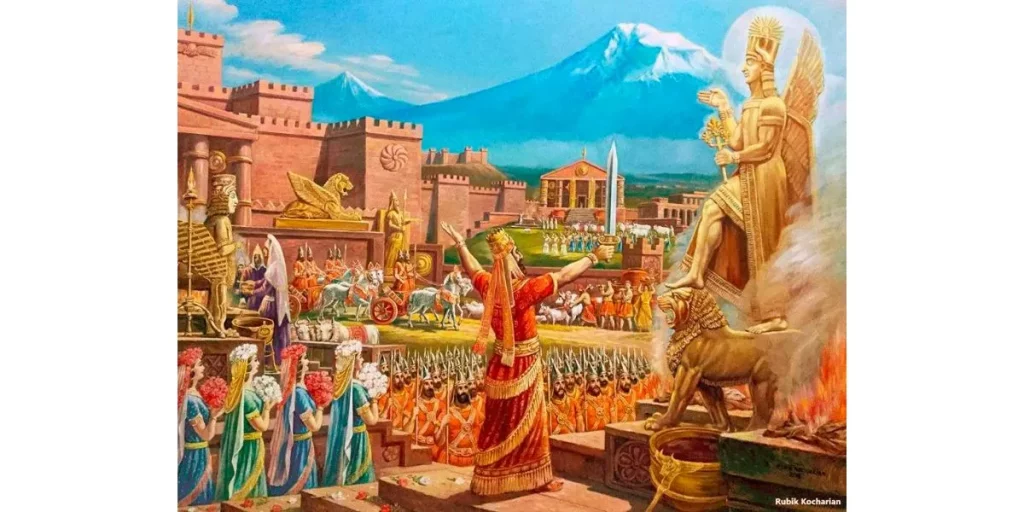
Ancient Armenian New Year traditions – then and now
Some really interesting customs and rituals were symbolic of my pagan Armenian ancestors. Unfortunately, many of those are forgotten these days, but it’s fascinating to learn about them and how they influence us today. While today we have only a very small neo-pagan community in Armenia, who practice our old traditions more prominently, most people follow rituals that in one way or another step from our ancient traditional ways of celebrating the New Year.
Fire
In ancient times, Armenian families lit a fire for New Year’s Eve and gathered around it. They believed that this is how they were giving all bad memories and mistakes to the fire, and instead receiving blessings. It’s funny, but I think these days the fire at home is replaced by a TV screen and the lights on the Christmas tree. I remember that when I was a kid, shortly before midnight my parents would turn all the lights off, leaving only those on the Christmas tree. The TV with music would also be on. That way we’d enter the New Year cheering in this dim light.
Out of home, though, the bonfires are still very much a thing for Armenians on New Year’s Eve night, especially if you go out of the city and see how people celebrate in villages. It’s a time of joy and a new beginning. All the negativity is left in the old year and people welcome the new beginning with new hopes.
Water
The warship of water element was very strong for ancient Armenians. So, it’s not surprising that there would be rituals associated with water blessings during the celebrations of the New Year. Young people would throw pieces of “tarehats” (a traditional Armenian New Year sweetbread) into the river, along with fruit and grains, to please the gods and ask for their blessing in the upcoming year. Houses would be cleaned very thoroughly, with water of course, to make sure the home is clear of any negative energy of the past year.
Today, nobody throws food into the rivers in Armenia. Or at least I haven’t heard of that being practiced anywhere. But the obsession with cleaning and tidying up the household on December 31st is very real. In my own family, I vividly remember my mom “bullying” myself and my sisters into making sure everything around the house was squeaky clean before midnight on New Year’s Eve. 🙂
It’s also believed (to this day) that you should not have garbage in the house when 12 o’clock strikes. So, the Armenians take all the garbage out of the house before New Year’s Eve. I’m telling you, this idea of cleaning the house is a proper obsession during festivities.
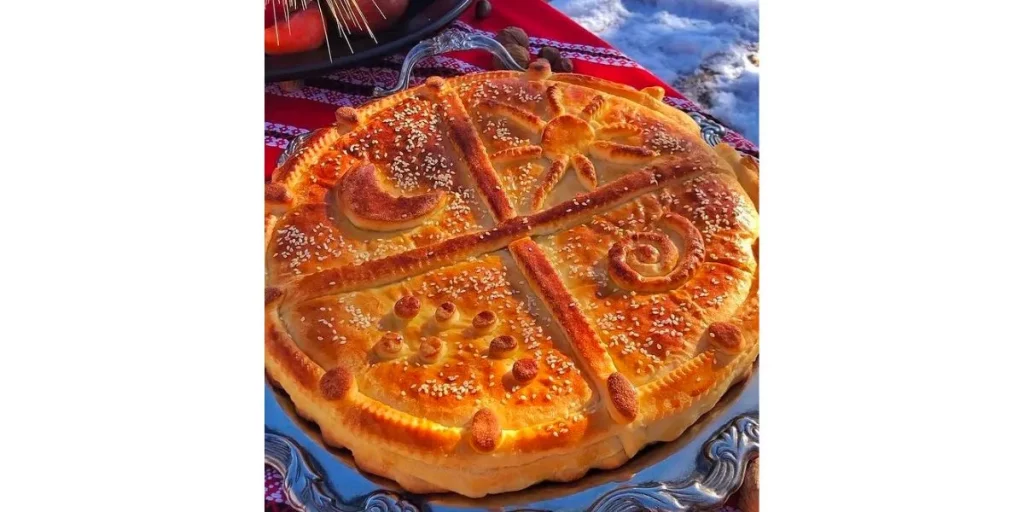
Superstitions and mystery
Fortune telling was a huge part of New Year’s festivities. In ancient Armenian communities, young people would put an egg on a plate with ashes and colors. The next morning, they were looking for more colors than ashes on the shell. And if this was so, it would be their year!
Another thing people did to predict the future was dressing up a domestic animal, typically a dog or a cat, and taking it out to the yard. Then everyone would watch the animal choosing their path. If it crossed the barn with the right leg, it was a good sign! The year was going to be fabulous in their minds.
People would also take active steps to attract good luck in the new year. There is one interesting thing I know some Armenians do, which I couldn’t find the roots for. Some Armenians throw their old socks from the window on New Year’s Eve, as it’s supposed to clear away all the negativity of the past year and attract fortune in the upcoming one. I’m pretty sure this practice has some roots, I just can’t find them. So, if you have any ideas, do reach out to me to share.
Community
Gatherings of family and friends during New Year’s Eve is a deeply rooted tradition that has not changed over the years. Even though the dates have changed, and today Armenians celebrate New Year’s Eve on December 31st, instead of Navasard at the end of summer, the drive to bond with your community is very much alive.
New Year is definitely a time for family reunions in the minds of Armenians. Even those Armenians living abroad don’t break the traditional rules and often celebrate New Year’s Eve in Armenian communities locally, or they travel to Armenia to spend this time of the year with their friends and families.
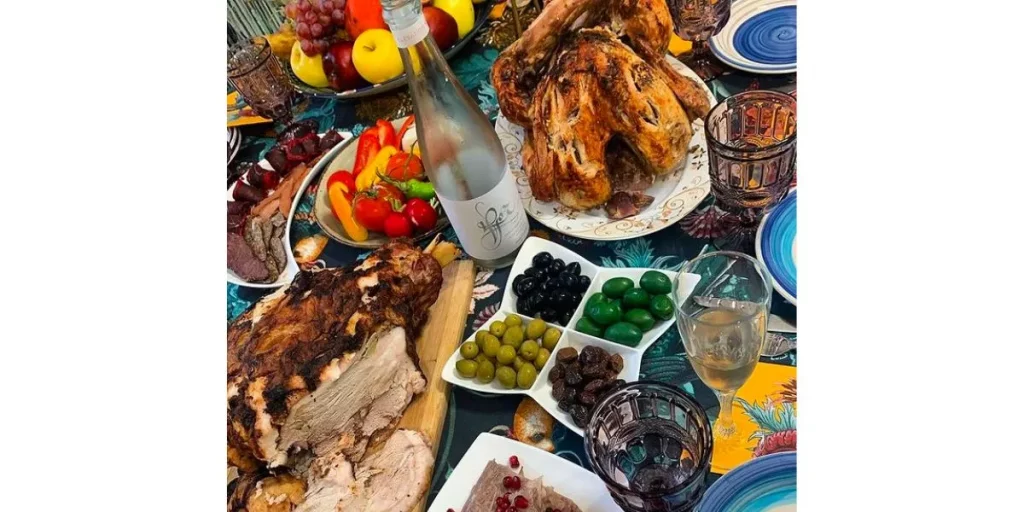
Traditional food and feasting
If you happen to visit an Armenian family on New Year’s Eve, you will see lots of food on the table. They serve meat, grains, vegetables, Armenian traditional dolma, pancakes, baked pork, basturma, sujukh, and all kinds of sweets and nuts. Even the most modest families have totally luxury tables on New Year’s Eve. The belief is that the year will be prosperous if you meet it abundantly.
It’s shocking to see a typical family of 4 having so much food on the table that could easily feed 20 people. But the point is that good food is always accompanied by good company. Armenians visit each other on New Year’s Eve and in the days following that night. We take these visits so seriously, that sometimes it’s insulting for people if their close relatives don’t visit them. Besides, you cook so much with the exact expectation of people coming to see you during those days. And one should not waste food.
Although Armenians sometimes go too far with this, it’s still an exciting experience to make some of these delicious dishes and experience the warmth and togetherness that come with sharing a meal with loved ones.
Armenian Christmas vs. New Year’s Eve
The big holiday in Armenia is New Year’s Eve on December 31st, not Christmas on January 6th. This is a result of the Soviet policy to minimize the influence of religion on people. So, while we know that the Armenian Christmas takes place on January 6th, most people in modern-day Armenia don’t really celebrate it much. It’s different for the Armenian communities abroad though, especially those that never experienced the communist regime.
Since most Armenians are neither Orthodox nor Catholic, they “celebrate” Christmas, also known as “Surb Tsnund” on January 6th, marking the birth of Jesus Christ. For those Armenians who are deeply religious, this is a big event of course. Sure, they go to church to take part in the mass. Leading up to Armenian Christmas, many religious Armenians observe a period of fasting during the weeks of Advent. On Christmas Eve, some Armenians fast throughout the day until the evening church service. They abstain from meat and dairy products during that period. Sadly, unlike in the West, gifts are not part of our traditional Christmas celebrations. Those are handed out on New Year’s Eve, a week earlier.
Unlike the New Year table, Armenians serve very modest food at Surb Tsnund. Armenians eat rice with raisins and dried fruits and fish during that day. They may also enjoy Pasus Tolma which is all kinds of grains in pickled cabbage leaves.
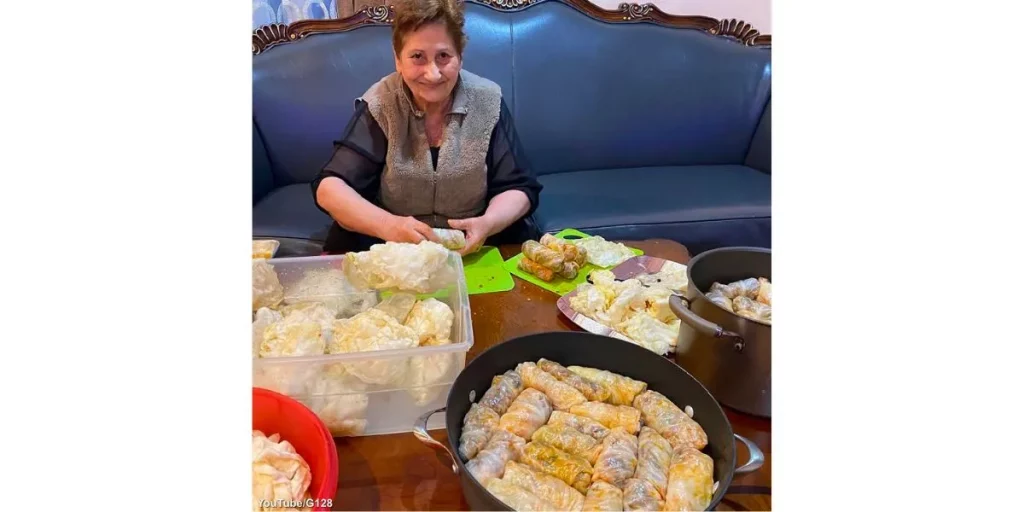
Wrapping up
Armenian New Year traditions are a blend of faith and cultural symbolism. They reflect the profound sense of optimism that the new year will bring only good to the family. They open a new chapter in people’s lives and this renewal gives them the force to continue with the challenges of life. Whenever you are in Armenia on New Year’s Eve, or you are among Armenians elsewhere in the world, you will feel this inspiration. If you liked this post, I think you might want to read more about the Armenian custom of jumping over fire or the history of Zoroastrianism in Armenia. And if you do experience the Armenian New Year, don’t forget to share insights with me on Twitter or Instagram with #ArmeniaTravelTips.
Featured image credits: Photo by Arthur Harutyunyan on Unsplash (edited)
Please help me make Armenia more popular!
